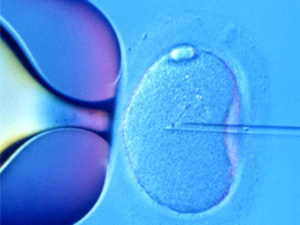Asexual Human Reproduction
 Today the phrase “from the beginning of his/her biological development” accurately defines when the life of an individual human being begins to exist; the terms “conception” or “fertilization” do not.
Today the phrase “from the beginning of his/her biological development” accurately defines when the life of an individual human being begins to exist; the terms “conception” or “fertilization” do not.
We have learned this is so because the fact is that not all human beings begin through sexual means; some are reproduced asexually.
This concept is difficult to explain without a scientific background. I know this firsthand because my vocation is wife, mother, and grandmother, not geneticist. But it can be explained so that anyone gets it.
Follow me for a moment.
Sexual reproduction means “fertilization”—the union of a human sperm with a human egg resulting in the reproduction of a genetically distinct human being. This can happen naturally within a woman’s body, or artificially in an IVF (in vitro fertilization) or ART facility (artificial reproductive technology).
Asexual reproduction simply means “without the immediate use of fertilization”; it is the combining of parts of a human sperm, egg, embryo, or synthetic genes to reproduce a new human embryo. Most of the time this happens in IVF/ART facilities. But one kind of asexual reproduction takes place naturally in the woman’s body—monozygotic (identical) twinning. Monozygotic twinning, which is depicted in the diagram here, is a type of asexual reproduction, yet has been used in IVF cycles for decades. It is, in truth, a type of human cloning.
Other types of asexual reproduction take place artificially in IVF/ART facilities (e.g., cloning by somatic cell nuclear transfer).
The “3-parent-embryo” now in the news involves the asexual reproduction of human embryos by several techniques (e.g., mitochondrial transfer, another kind of cloning). The mitochondria are found in the female’s oocyte (egg) and if they are defective, the mitochondria from a third party’s egg can be used instead. Thus three parents for one embryo!
These forms of asexual reproduction exist and do result in human beings whose lives should be protected by law and in the culture.
While some of us began to exist by means of fertilization, not all of us did. The terms “fertilization” or “conception” do not cover all human beings. Laws protecting only those reproduced by “fertilization” would not protect those asexually reproduced.

